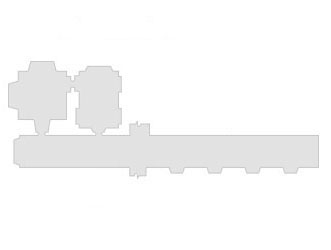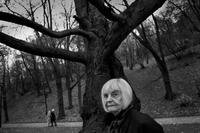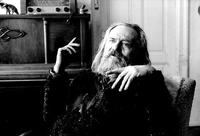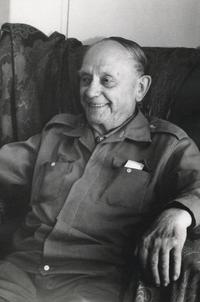Alternative Gaya
Galerie Středočeského kraje / Gallery of the Central Bohemian Region
15 June 2014 – 31 August 2014
Curator David Bartoň; Adam Drda is the co-curator of the exhibition of the works of Gertruda Gruber Göpfertová
"After Kyjov we walked arm in arm? Damn, damn, what were people saying ?"
(R. Jičín, Beneath the Sun of Ludibrionism)
“But how are we to come to terms with a genuine work of art, something that is predicated on the fact we must continually and again remind ourselves what a work of art and our criticism of it is?”
(Z. Vašíček)
What is a work of art? How can one differentiate an artistic work from the flood of items passed off as art? Who is an artist? Are the two somehow tied to a place and origin? Does art emerge from a concrete locale?
The city of Kyjov is called Gaya in German. Gaya is an ancient word, which since the time of the Greeks has signified the earth as the fundament and foundation. It was in Moravian Kyjov that the fates of the ingenious inventor Květoš Vašíček, his son Zdeněk, a philosopher, his friend, the painter and thinker, Miroslav Tichý, and the philosopher Rudolf Jičín all intersected. During her studies here, Gertruda Goepfertová also began writing and painting. It is tempting to resort to the phrase “genius loci.” Furthermore, all of the aforementioned artists spent most of their lives in various types of emigration. They were all threatened by the regime controlled from Moscow, and they all were affected by repression. These, however, were merely the external conditions into which fate had placed them. Of course, it was primarily a matter of how these conditions were accepted and how they affected the character of the artist and his or her work. All are recluses; they created and continue to create out of some sort of necessity. They were all sui generis outsiders, which is not, as Z. Vašíček writes, so easy. “Every outsider is different; only the successful are the same.” Their internal worlds, bound for a time with the same place, refer to another world — Gaya, to “another Kyjov.” An artist’s original and genuine achievement emerges from a connection with a reality that is not limited to a specific place. It is something beyond a vision, a construct, something beyond biases, and it cannot be “engaged” or connected to any sort of ideology, worldview, or even national sentiment. This Gaya, this reality, is available only to the one who is alone and who has acquired the ability to see the genuine beneath the ballast of schemata cultivated by society, deeply rooted opinions, and the deception of shared fictions. The life and work bear testimony to what the artist and philosopher have glimpsed. “Artistic works come into existence not for the sake of the result, but for the sake of the artistic means of self-knowledge. The person is more highly valued than the artist; artistry gives way and occupies a secondary place” (F. X. Šalda).
Works stand side by side in our exhibition so that, through their through their juxtaposition and combined effect, the viewer will come to know what “seeing” in the proper sense means. As Marcus Aurelius writes, “They know not how many things are signified by the words stealing, sowing, buying, keeping quiet, seeing what ought to be done; for this is not effected by the eyes, but by another kind of vision.” It is then up to the viewer to seek out a glimpse of his own “other Kyjov” with his own “other vision.”
David Bartoň
While examining the exhibition, you will have the opportunity to listen to the curators’ commentary; the exhibition is introduced by David Bartoň in a conversation with Karel Oujezdský.





